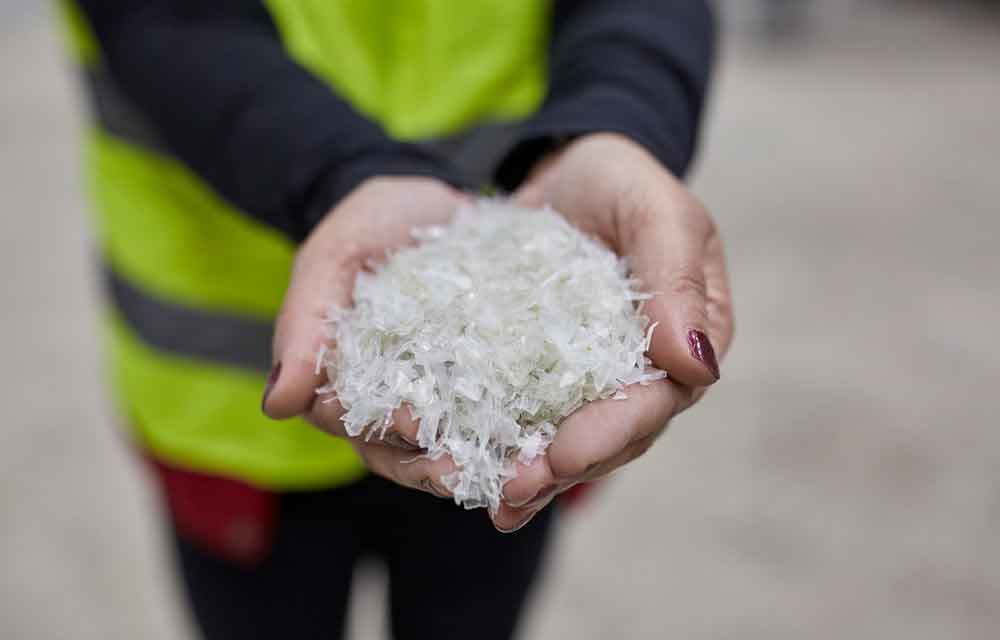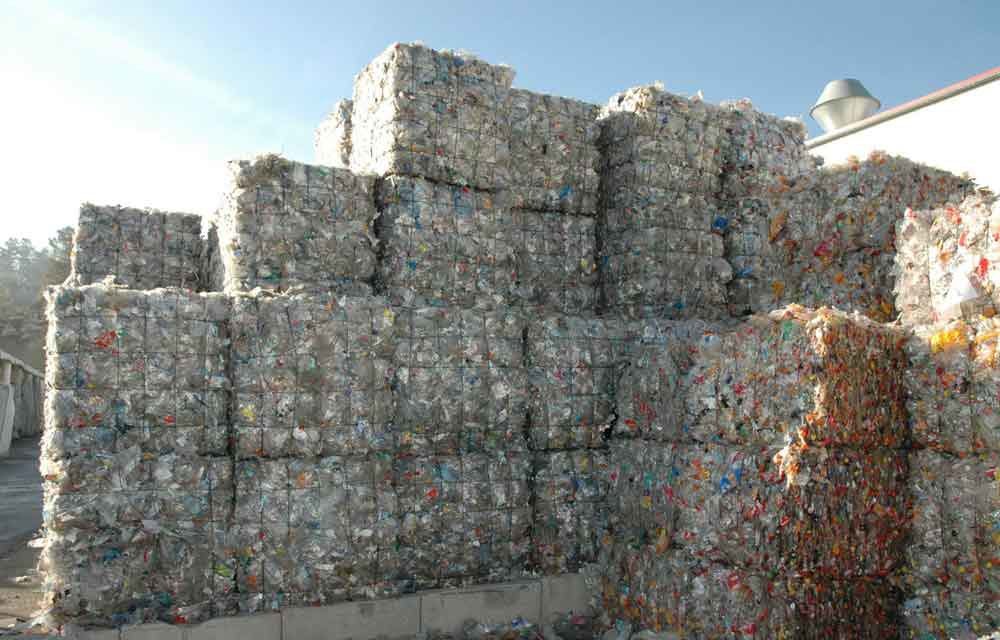
Using recyclates is completely in line with a circular economy. Secondary raw materials are won by recycling plastics that have been disposed of at least once – either as household waste (post-consumer recyclates, PCR) or as production waste (post-industrial recyclates, PIR). The most successful example of this to date are PET bottles: In a genuine cycle covering collection systems, reprocessing and reuse, old materials are given a new lease on life.
But whether you’re looking for PET, PE or PP, the recyclate market is currently nearly empty and prices have increased dramatically.
This is primarily due to the shortage and high expense of new materials resulting from the scarcity of raw materials, which has also pushed up demand for recyclates.
Dr. Dirk Textor, Chairman of the bvse-Fachverband Kunststoffrecycling (Federal Association of Secondary Raw Materials and Waste Disposal – Plastics Recycling) recently summarized the situation as follows at the association’s used plastic action day: ‘After plastic recycling was put under extreme pressure at the beginning of the COVID-19 pandemic, also due to the crude oil prices plummeting and dragging down the prices for new plastic materials with them, the situation changed starting in October 2020.
There were more and more reports of force majeure concerning the availability or new plastic materials. Maritime containers were in short supply. Transportation by sea and land became more expensive. Finally, the grounding in the Suez Canal in March 2021 and technical failures in Chinese export ports exacerbated the situation even further; there was a lack of new plastic materials.
Suddenly, recyclates were in demand more than ever.’ According to Dr. Textor, plastic recyclers have now sold out their entire stock as a consequence. And this despite the fact that, before the pandemic, they were often accused of being unable to produce materials of the required quality. According to Dr. Textor, this proves that the arguments above were only a pretext. ‘It has now become very clear that we produce materials of sufficient quality for the market to accept and process.’
MANUFACTURERS NEED RELIABLE SUPPLY
Last year, the Branchenverband Industrievereinigung Kunststoffverpackungen (IK) (German Association for Plastics, Packaging and Films) launched a study to determine the potential uses of recycled material in plastic packaging. Its results were as follows: The amount of recyclates could be increased from 475,000 tons to approx. 960,000 tons per year, which corresponds to about 22% of the production volume.
However, to do this, manufacturers who want to switch to using recyclates primarily need a reliable supply – which simply doesn’t exist at the moment. ‘Currently, eight of ten suppliers are sold out of high-quality recyclate for several months’, said Christian Schiller, founder and managing director of Cirplus, a digital purchasing platform for recyclates, in January 2022. According to Schiller, the price increase has been equally dramatic and raw materials are currently two-thirds to three-quarters more expensive.
For example, he says that the price of RPET has risen by 74% since January 2021. At the same time, the ratio of supply and demand is practically reversed. This affects all markets. ‘80% of recyclates that are traded on our digital platform come from the European Economic Area, plus Russia and Turkey, and the remaining 20% come from Asia’, Schiller explains. Cirplus has over one million tons of recycled material listed, many types of which are currently not available.
At the same time, experts agree that the plastic recycling industry can produce significantly more recyclates and thus economically supplement new materials. However, equal conditions must be created first. That is where standardization comes in. Christian Schiller, managing director of Cirplus, was involved in developing the new DIN SPEC 91446, a standard for recycling plastics that is also intended as a foundation for a future European Standard. ‘This path can only succeed through standardization.’
In a joint position paper, five German plastic and recycling industry associations also called for this solution (Plastics Europe Deutschland, GKV Gesamtverband Kunststoffverarbeitende Industrie, VDMA Fachverband Kunststoff- und Gummimaschinen, BDE Bundesverband der Deutschen Entsorgungs-, Wasser- und Rohstoffwirtschaft and bvse Bundesverband Sekundärrohstoffe und Entsorgung).
They criticized that currently, every recycler in Europe delivers output materials of a different quality depending on the waste input stream, which makes supplying the market with large volumes of consistent quality very difficult. Manufacturing plastic products, however, requires consistent input materials, i.e. raw materials with a guaranteed level of quality.
STANDARD FOR COSMETICS PACKAGING IS ON THE WAY
For the cosmetics packaging sector, PCR safety standards are already being developed that are intended to help close post-consumer plastic waste cycles. To this end, branded companies in the industry, together with recycling companies, plastics manufacturers and processing companies, founded the consortium CosPaTox (Cosmetics, Packaging & Toxicology) last summer.

The plan is for the entire industry to benefit from the consortium’s work, including companies that have so far avoided using non-food PCR due to the lack of toxicological assessments and standardization.
A key issue for the sufficient long-term availability of recyclates is separate collection. ‘Recycling works best when plastic waste is collected separately, which the collection of PET beverage bottles with refundable deposits has clearly shown us’, says IK managing director Dr. Isabell Schmidt.
‘Here, recyclates are produced that even comply with the strict statutory requirements for contact with foods. In order to meet the need for raw materials of industries processing plastics in future, politicians must work to ensure that separate collection is significantly improved all over Europe and that landfills with plastic waste are completely banned.’
Meanwhile, retailers and manufacturers are increasingly securing supplies by setting up their own systems for taking back recyclable packaging. Industry pioneer Werner & Mertz has been relying on his own network for years with his recyclate initiative and, together with his partners, recovers PET recyclate from post-consumer material from European beverage bottle collections and – a major exception in the market – also recovers an ever-increasing proportion of recycled material from the German ‘yellow bag’ for plastic waste.
Industry experts assume that the demand for high-quality secondary raw materials will remain high, even if more new material becomes available again. The UK is also focusing on economic incentives with the planned tax on plastic packaging with less than 30% of recycled content starting in April 2022. Italy and Spain are also expected to follow suit with comparable taxes.
